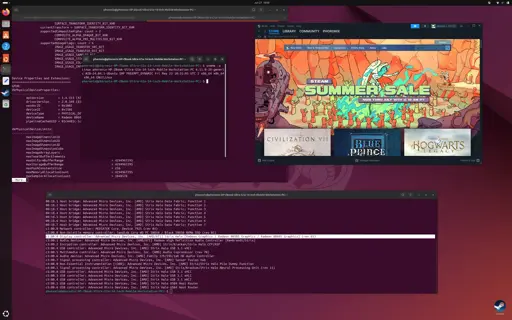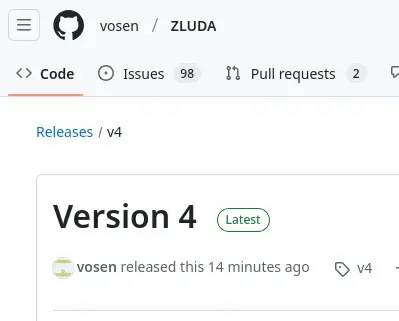Thanks to both of you, my same thoughts, but I also wanted to hear an outside perspective as I am not so well versed in IPv6. But it sounds reassuring. Shall I also consider exposing some HTTP/S services for media over IPv6 is also relatively safe, as long as I have MFA etc?
- 16 Posts
- 64 Comments

 91·30 days ago
91·30 days agoSame. That’s for me a red flag that a company took the enshittification path and things will get progressively worse.
Plus I would rather support an open source project that benefits the whole community than a greedy company who is trying to milk their customers.

 4·2 months ago
4·2 months agoWelcome, glad to be of help.

 1·2 months ago
1·2 months agoThe problem is that I have a couple of services listening on different ports and I want to use the reverse proxy to listen to incoming requests and route the traffic to the corresponding ports. I also want to issue SSL certificates and serve the traffic over TCP port 443.

 1·2 months ago
1·2 months agoYes, I know that, but I just don’t want to remember the port numbers or create some bookmarks.
I think I can create a CNAME record for *.media to point to the Tailscale address of the reverse proxy and then use the reverse proxy with Cloudflare API key to serve SSL certificates from my domain.
I am currently struggling a bit with the setup though.

 3·2 months ago
3·2 months agoI have a registered domain name already, but I am behind CGNAT and I don’t really have a public IP.
I want to allow access to my services remotely only through Tailscale.
I will definitely do that, I just want to finish the whole setup.
I am playing around with Podman Quadlet and that’s one hell of a rabbit hole. I have everything up and running, and now I need to configure the containers, and probably will deal with other pain points, etc.
The good thing is that I have documented the whole process so it is reproducible but it took me quite some time to figure out everything.

 6·2 months ago
6·2 months agoBecause it is beginner friendly and it has a lifetime license I guess and it is not yet enshittified.
Nice, thanks for sharing. How did you solve the file permission issue?
Also I see you put all your services as a single pod quadlet what I am trying to achieve is to have every service as a separate systemd unit file, that I can control separately. In this case you also have a complication with the network setup.
You can actually set your user to linger with
sudo loginctl enable-linger $USERI will test your setup and report back if it works.
By the way what was the reason to switch back to Docker Compose?
There are no logs in journalctl, just when I check the status of the systemd services I see that the container service has crashed and after 5-6 restarts it gave up.
I was thinking of installing the latest podman 5.7.0 and try with it, as there are quite a few updates between that one and 5.4.2 that comes as standard on Rocky.
I can try to upload my container services and network tomorrow and share the link here.
Absolutely plus I love the idea of having them as separate services. I just don’t know how to configure them apparently.
Did you create a separate systemd network for your Quadlets or are you using a bridge or host network?
I don’t know, I tried even with uptime-kuma and Homepage but as soon as I start the service it kills it after 6 unsuccessful restarts. Maybe I will spin up a completely new VM tomorrow and start from scratch.
I think the problem might be with the data directory permissions, even though I have added the subuid and the subgid to my user and enabled the lingering on the user.
But I did so many things so there is a chance it is already quite messed up.

 21·3 months ago
21·3 months agoAs far as I am aware they are also better at video encoding and if you want to use Blender or similar software, yes, it is niche, but a credible consideration. As always, it really depends on the use case.

 103·3 months ago
103·3 months agoEven though I hate Nvidia, they have a couple of advantages:
- CUDA
- Productivity
- Their cards retain higher resale values
So if you need this card for productivity and not only gaming, Nvidia is probably better, if you buy second hand or strictly for gaming, AMD is better.

 63·3 months ago
63·3 months agoCUDA acceleration.

 24·3 months ago
24·3 months agoObsidian with Syncthing running on both your Android and your server for syncing your notes.









True, maybe the best way then is to expose them only within your Wireguard network.